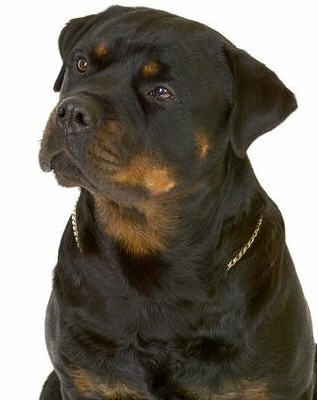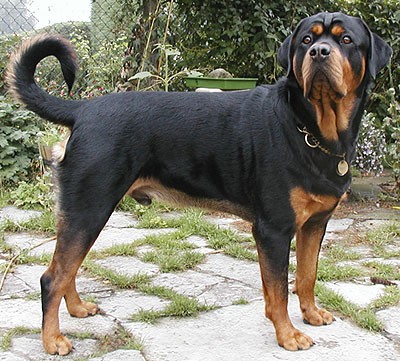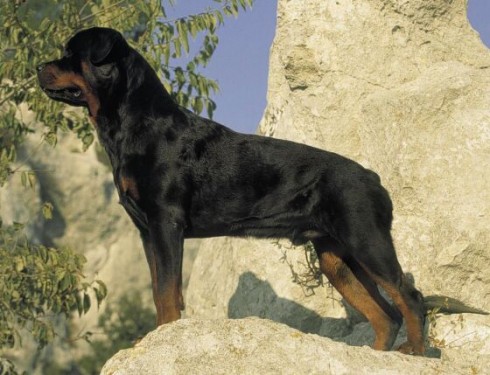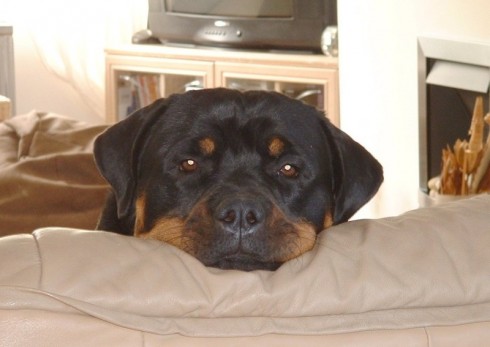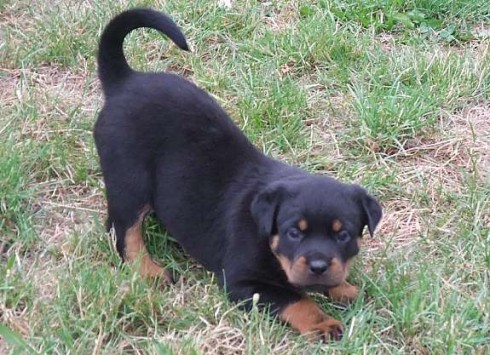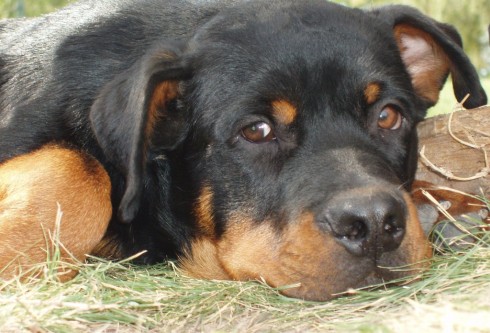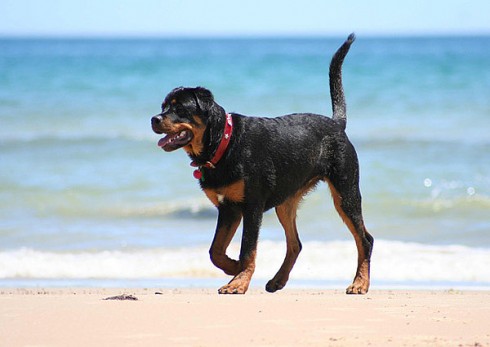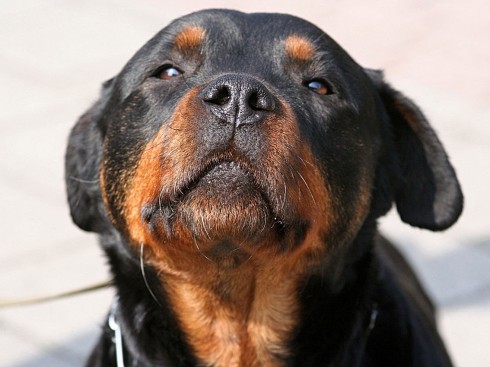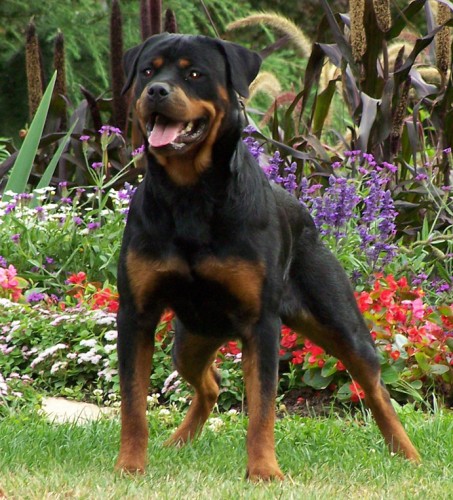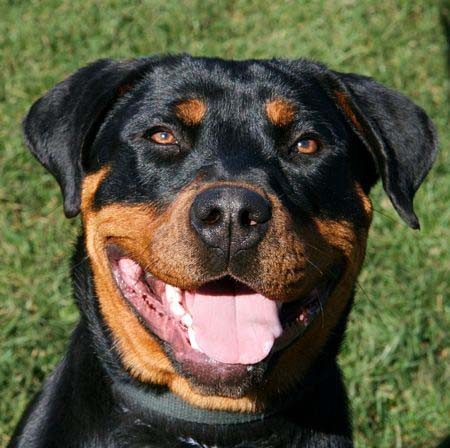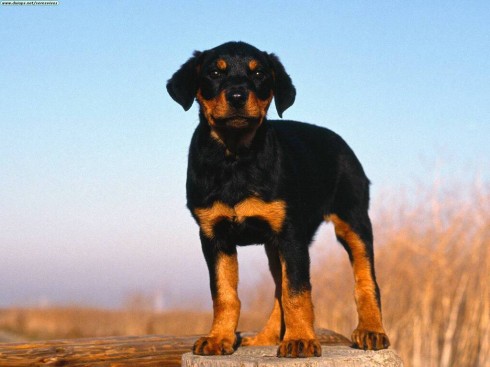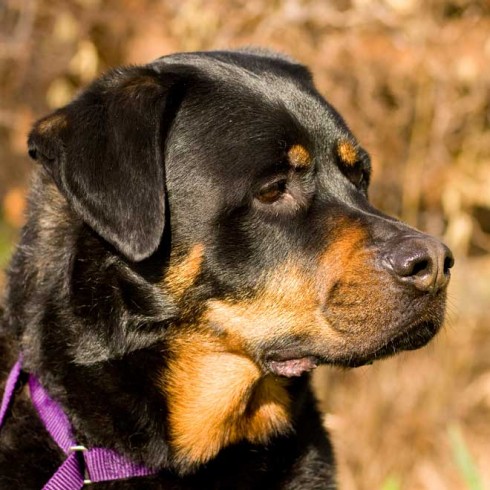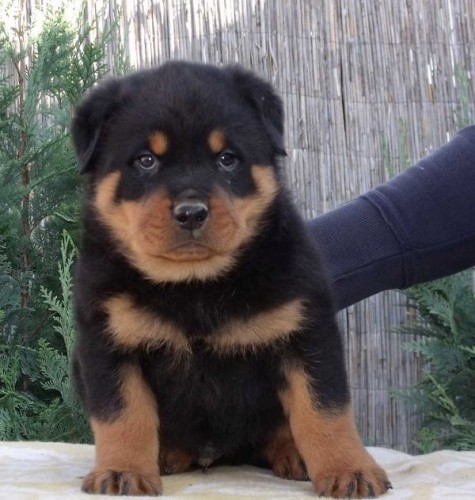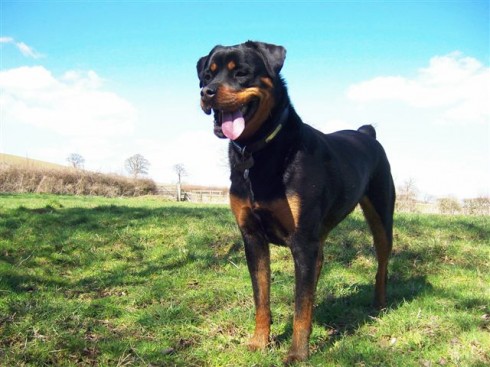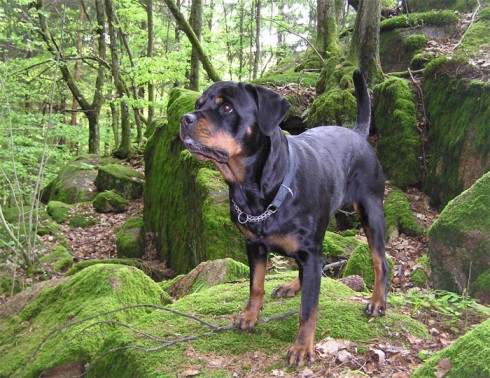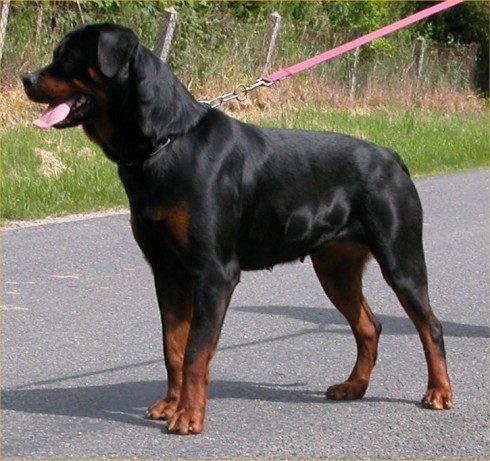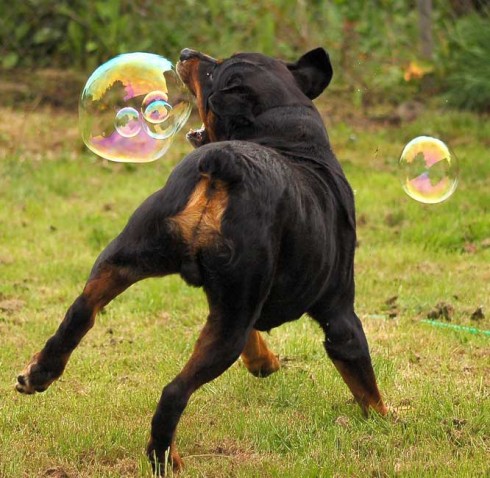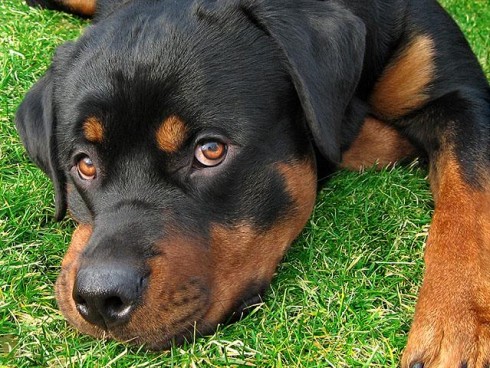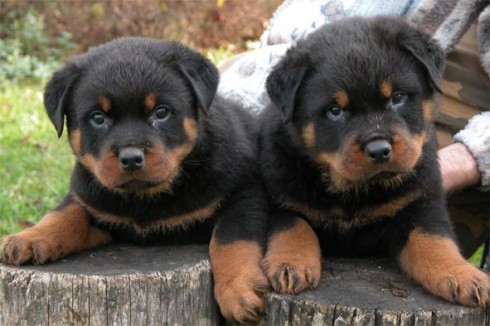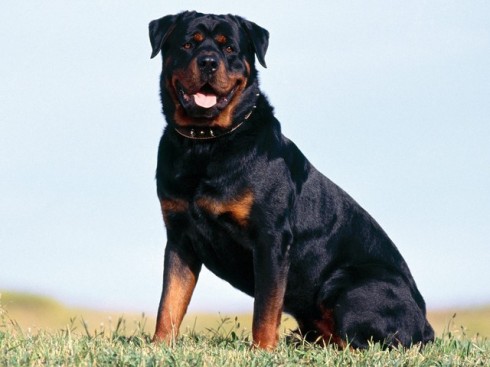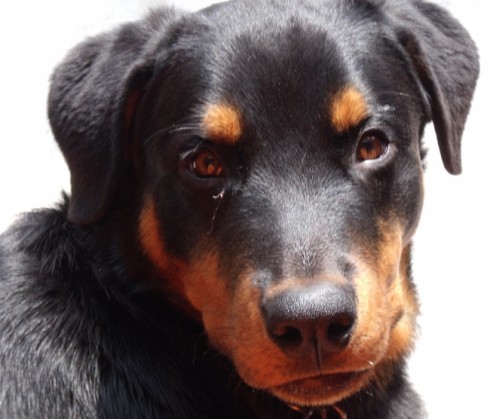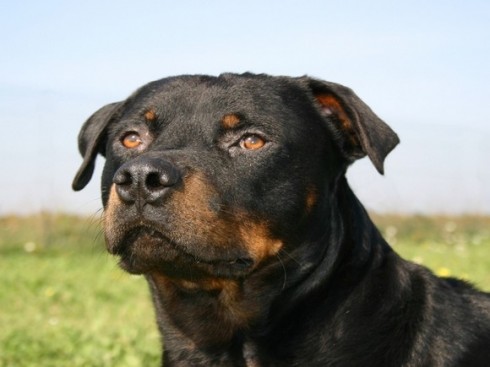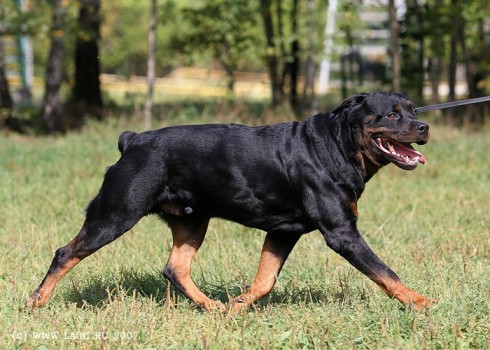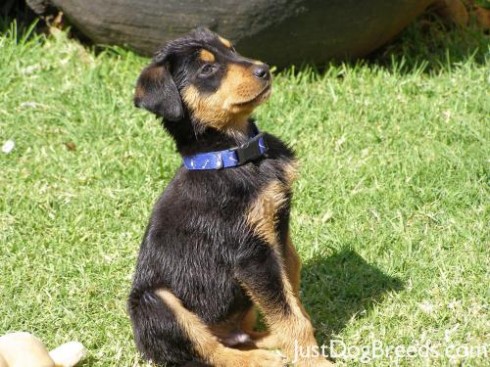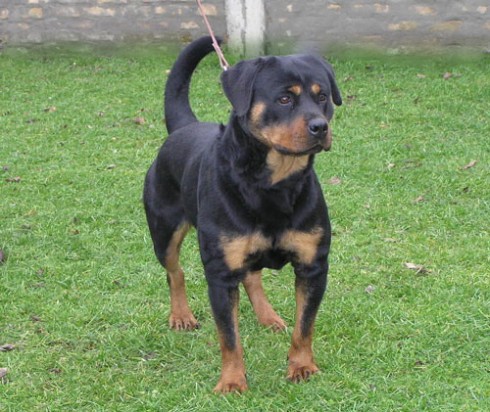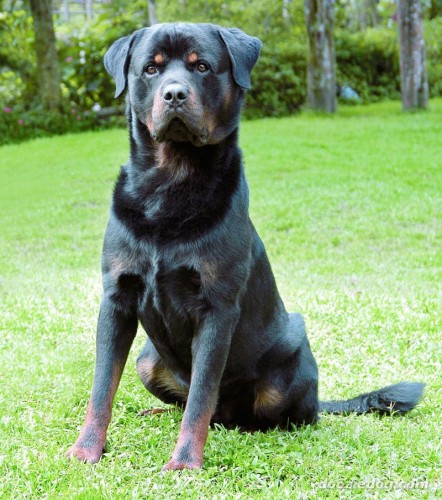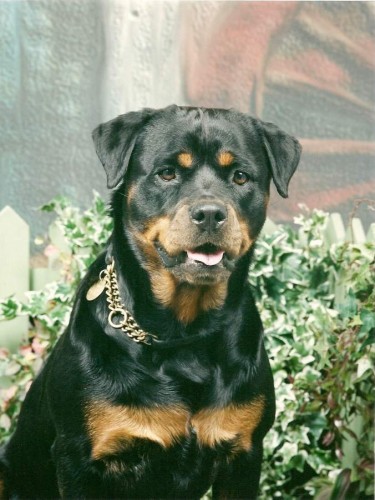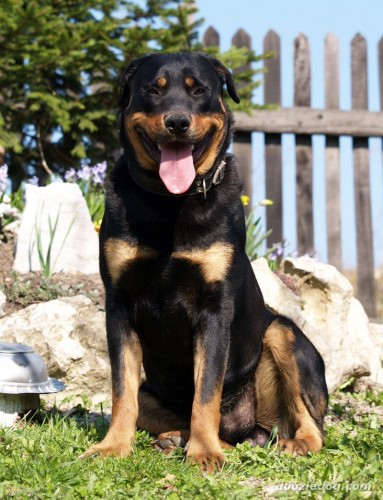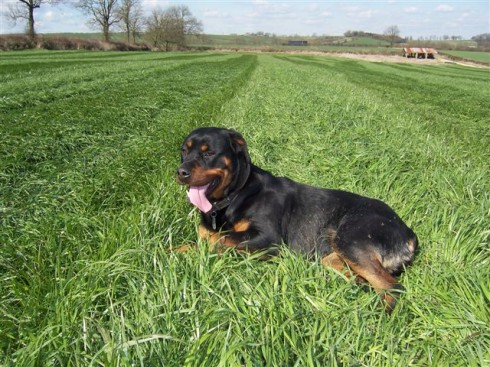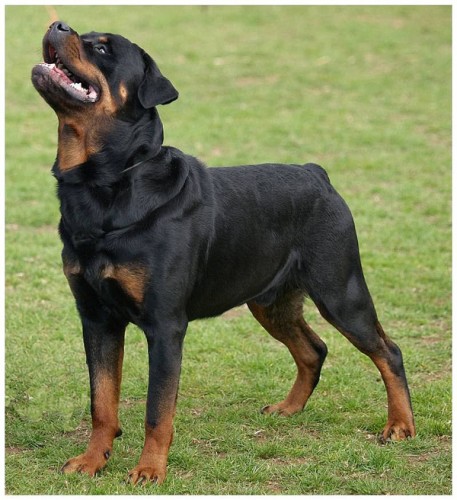Main Index
In Store
Our Web Store
Miniature Schnauzer Picture Gallery
Latest Dog Blogs
- What Are The Basic Commands To Train A Dog?
- PaySafe As The Most Popular Type Of Deposit
- Everything You Need To Know About Pet Sales
- Dogs Contribute To Our Physical And Mental Well Being
- How To Choose Where To Bet On Greyhounds In 2022
- Volunteer With Animals - How To Help Dogs Around The World
- Basic Understanding Of The House Edge
- Why You Should Get A Dog
- Top 20 Popular Dog Names Around The World
- Constipation in Dogs and How to Find Solutions
Rottweiler
The Full Rottweiler Description
The Rottweiler is both a bold guardian and an intelligent, steady friend. But he is rather aloof, owing to his history as a hardworking drover and guardian. With his owner, though, he aims to accompany and guard with all his heart. He loves exercise and will thrill to the challenges of any outdoor sports that include dog and owner.
Did you know?
The origin of the Rottweiler is not a documented record. Once this is recognized, actual history tempered by reasonable supposition indicates the likelihood he is descended from one of the drover dogs indigenous to ancient Rome. This drover dog has been described by various accredited sources as having been of the Mastiff type - a dependable, rugged, willing worker, possessed of great intelligence and a strong guarding instinct.
So you want to own a Rottweiler?
The Rottweiler makes a loyal and wonderful companion, but requires time and training. The Rottweiler is a basically calm, confident, and courageous dog with a self-assured aloofness.
The Rottweiler is a powerful dog with an inherent desire to protect home and family. The Rottweiler's strong will to work make it an especially good companion dog.
Indicative Breed Standard
General Appearance
Above average size, stalwart dog. Correctly proportioned, compact and powerful form, permitting great strength, manoeuvrability and endurance.
Characteristics
Appearance displays boldness and courage. Self-assured and fearless. Calm gaze should indicate good humour.
Temperament
Good natured, not nervous, aggressive or vicious; courageous, biddable, with natural guarding instincts.
Head and Skull
Head medium length, skull broad between ears. Forehead moderately arched as seen from side. Occipital bone well developed but not conspicuous. Cheeks well boned and muscled but not prominent. Skin on head not loose, although it may form a moderate wrinkle when attentive. Muzzle fairly deep with topline level, and length of muzzle in relation to distance from well defined stop to occiput to be as 2 to 3. Nose well developed with proportionately large nostrils, always black.
Eyes
Medium size, almond-shaped, dark brown in colour, light eye undesirable, eyelids close fitting.
Ears
Pendant, small in proportion rather than large, set high and wide apart, lying flat and close to cheek.
Mouth
Teeth strong, complete dentition with scissor bite, i.e. upper teeth closely overlapping lower teeth and set square to the jaws. Flews black and firm, falling gradually away towards corners of mouth, which do not protrude excessively.
Neck
Of fair length, strong, round and very muscular. Slightly arched, free from throatiness.
Forequarters
Shoulders well laid back, long and sloping, elbows well let down, but not loose. Legs straight, muscular, with plenty of bone and substance. Pasterns sloping slightly forward.
Body
Chest roomy, broad and deep with well sprung ribs. Depth of brisket will not be more, and not much less than 50 per cent of shoulder height. Back straight, strong and not too long, ratio of shoulder height to length of body should be as 9 is to 10, loins short, strong and deep, flanks not tucked up. Croup of proportionate length, and broad, very slightly sloping.
Hindquarters
Upper thigh not too short, broad and strongly muscled. Lower thigh well muscled at top, strong and sinewy below. Stifles fairly well bent. Hocks well angulated without exaggeration, metatarsals not completely vertical. Strength and soundness of hock highly desirable.
Feet
Strong, round and compact with toes well arched. Hindfeet somewhat longer than front. Pads very hard, toenails short, dark and strong. Rear dewclaws removed.
Tail
Customarily docked.
Docked: Docked at first joint. Strong and not set too low. Normally carried horizontally but slightly above horizontal when dog is alert.
Undocked: Strong and not set too low. Normally carried horizontally but slightly above horizontal when dog is alert. May hang when dog is at rest.
Gait/Movement
Conveys an impression of supple strength, endurance and purpose. While back remains firm and stable there is a powerful hindthrust and good stride. First and foremost, movement should be harmonious, positive and unrestricted.
Coat
Consists of top coat and undercoat. Top coat is of medium length, coarse and flat. Undercoat, essential on the neck and thighs, should not show through top coat. Hair may also be a little longer on the back of the forelegs and breechings. Long or excessively wavy coat highly undesirable.
Colour
Black with clearly defined markings as follows: a spot over each eye, on cheeks, as a strip around each side of muzzle, but not on bridge of nose, on throat, two clear triangles on either side of the breast bone, on forelegs from carpus downward to toes, on inside of rear legs from hock to toes, but not completely eliminating black from back of legs, under tail. Colour of markings from rich tan to mahogany and should not exceed 10 per cent of body colour. White marking is highly undesirable. Black pencil markings on toes are desirable. Undercoat is grey, fawn, or black.
Size
Dogs height at shoulder: between 63-69 cms (25-27 ins); bitches between 58-64 cms (23-25 ins). Height should always be considered in relation to general appearance.
About Our Article Directory
- Article
- 27 November 2010
- 2 comments
Guard Dogs - The 6 Best Breeds to Protect Your Home and Family
- Breed Article
- 1 November 2010
- 1 comment
Canis lupus familiaris
- Breed Article
- 29 May 2010
- No comments
Quick Search
Donate
Latest Dog Pods
- Tips on How to Stop Your Dog from Biting
- Beware - Not All Advertised Dog Rescues Really Are! How Can You Know The Truth?
- Helpful Tips For Dog Obedience Problems
- How to Keep Dogs From Eating Poop
- Dog Grooming Tips - A General Overview of the Very Basics of Dog Grooming
- Recognising Different Types of Dog Obedience Problems
- 5 Important Tips On Feeding A Puppy


